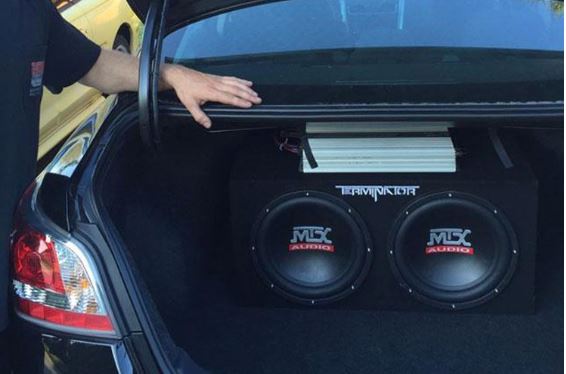A new car is never enough for an enthusiast! You always want to soup it up to be as fancy as possible, and a great place to start would be to install a set of powerful subs. However, setting up the subwoofers in a way that fits your preferences is a task easier said than done.
Luckily, you can never go wrong with the right strategy!
In this post, we provide insight into the five most important aspects to consider when you decide to install subwoofers in your car.
Size of the Subwoofer
The size of the sub you select might be limited to the amount of space you have inside your car rather than what you prefer, but it is still a crucial consideration to make. This is especially true if you want to maximize the boom coming out of your vehicle. For the highest volume, you want to look for the largest unit that your free space can accommodate.
But be careful not to finish up all the cargo space in your relatively confined car. After all, you can still get an 8” under seat subwoofer that can deliver the deep and forceful sound you’re looking for. The size of the cone is another aspect you want to examine when shopping for a subwoofer.
Normally, a larger cone will produce a deeper bass compared to a smaller one. The simple explanation is that it can move more air. However, the difference in bass between the two might be affected by other factors, as will be discussed below. So, you should be at peace letting the amount of car space dictate the size of the sub you choose.
Type of Sub Enclosure
Every sub requires an enclosure to perform. The kind of enclosure you settle on has a significant impact on the nature of bass you’ll get from the subwoofer. Typically, the two common types of enclosures available are ported and sealed.
Sealed enclosures come with an airtight design whereas the ported enclosures have a vent that allows for free airflow in and out of the casing. As far as the influence on sound produced between the two is concerned, you’ll notice that sealed enclosures deliver a tight and accurate bass whereas ported enclosures produce a loud and boomy bass.
This explanation only offers a fraction of what each enclosure type does. Nevertheless, your choice will eventually come down to these two options, and will likely be influenced by a combination of power and output considerations.
Generally, a sealed enclosure is smaller than a similar ported enclosure. But it will need more power to deliver comparable output due to the increased air pressure inside the casing. On the other hand, ported enclosures produce greater output, although their bigger frame implies that there is less cargo space for you!

The Receiver
After selecting the right size of a subwoofer and enclosure type, you might want to do some due diligence on the head unit to pair with your 6.5 speakers. Luckily, there is no shortage of options in the market. But note that with such variety comes the issue of selecting the right unit for you.
Thanks to technological advancements, you can find digital media in the form of “single or double din” receivers. Ideally, you should find a unit that comes with Bluetooth compatibility, as well as satellite radio. But just like the subwoofer, you’ll need to pay great attention to the kind of receiver you pick.
Go for a head unit with a broader touchscreen if you want to enrich your car’s dashboard. It also increases the overall elegance of your car’s interior. Other features that you may want to consider include the availability of USB and customizable display.
External Amplifier
Expect the bass notes to produce big sound waves! For your sub to generate these, it will require lots of power. This is only possible when you have an external source in the form of an amp. Remember to pay attention to the upper RMS specifications of power handling the sub, as well as the RMS output of the amplifier.
RMS refers to the amount of power that your subwoofer can handle comfortably, although it can also mean the amount of power your amp can produce without strain. Overall, the more power, the better the sound production in your car.
The final thing to note is that underpowering a sub can lead to more damage than when you feed it more power!

Resistance
Electrical components such as the voice coils inside the subwoofer offer some type of natural resistance to the electric flow. This resistance, or impedance, is measured in ohms and will determine the final bass production.
When connecting the subwoofer to the amplifier, ensure the impedance specifications on both units match. For instance, if the sub is rated as having an impedance of 2 ohms, then the amp has to have a corresponding 2-ohm resistance.
Final Thought
Getting a subwoofer for your car is a great way to improve the audio experience when jamming to your favorite playlist. But that is just the beginning of the story; you need to consider various factors, as explained above, to get a unit that best matches your needs.
The above article has all the information you need if and when you decided to get a sub for your ride!



